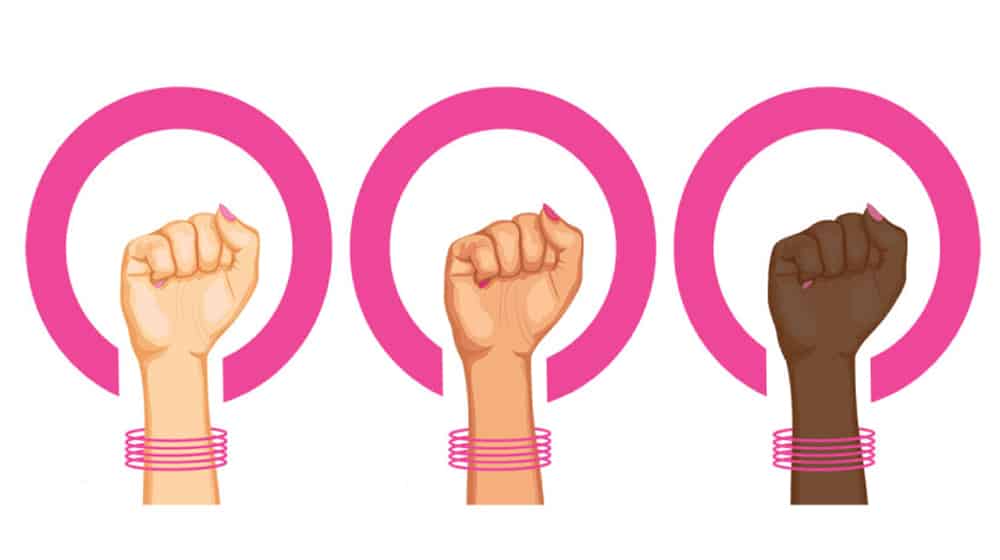More than half the world’s population is online – 4.2 billion logged onto the web and 5.1 billion used mobile phones in 2018. As digital platforms become more sophisticated, the demand for technically skilled workers increases. From programmers to data scientists, the opportunities to pursue lucrative, engaging careers in technology are clear.
Yet these opportunities go disproportionately to men because of a persistent digital skills gap. Internet usage is 12% lower among women than it is among men and that number more than doubles in some parts of the developing world. Despite the ubiquity of mobile phones, 200 million more men own these devices compared to women. It comes as no surprise then that girls are also five times less likely to consider a career in tech than boys.
The digital skills gap will widen over time as technology advances at an exponential rate. The good news is – with the right networks already in place, devices and technology becoming increasingly accessible and with businesses jumping onto the digital connectivity and innovation bandwagon, Asia is well-positioned to help girls and women close the digital skills gap and succeed in a career in tech.
The Digital Skills Gap Runs Deep
Before we can go about tackling it, we need to understand what created the gap in the first place. There are many reasons for the digital skills gap, including cultural perceptions that run deep — and which begin at early ages.
Girls face social, cultural and legal barriers when pursuing a digital career. These barriers are not limited to any one country or context and are driven by deeply-held views about the role of girls in the society that are now negatively impacting their chances in the digital world. Parents believe that daughters could be led astray when they use mobile phones to communicate with boys, turning one of the most accessible forms of digital technology into something negative.
The problem extends outside Pakistan too. For instance, a survey in Silicon Valley stated that 60 percent of female respondents reported they had experienced sexual harassment, or in Middle Eastern countries which have proportionately higher levels of STEM graduates than US and European universities despite so many young women still remaining at home once school has ended. Similarly, in China, during the recruitment process, many technology companies still explicitly state that certain positions are uniquely for men.
While cultural perceptions of gender and technology vary in different parts of the world, they are not the only factors in exacerbating the digital skills gap. Even in societies that ostensibly attempt to offer gender-neutral education, women still fall behind when it comes to digital skills. A European Commission Digital Single Market study last year noted a growing gap between men’s and women’s participation in the digital sector in education, career and entrepreneurship.
Beyond Cultural Biases
The negative messaging is reinforced by the lack of representation in technology. A lack of female role models plays a significant role in the gender gap in developed countries. When women do not see their peers entering technical careers and leadership roles, they are less likely to take an interest in those fields or to believe that opportunities exist for them to do so. They may also struggle to find mentors who can help them advance. The demographics of previously male-dominated fields such as law and medicine shifted as more women pursued careers in these areas and inspired other women to follow suit. Seeing women succeed in new areas sends a powerful message to girls and young adults still trying to discern their career interests.
The implications of the digital gap among young people extend beyond skills disparities and a lack of technical understanding. We have seen in many countries in Asia that young girls are less discerning when they are online, leading them into dangerous circumstances. From our colleagues working to promote child online safety, it is all too common to hear stories about girls who make themselves vulnerable online.
Solving a Multi-Generational Problem
Addressing the digital skills gap will require efforts from multiple areas of society, including corporate initiatives to foster diversity and inclusiveness, as well as schools introducing all children to opportunities to learn basic logic and engineering skills. Teaching girls digital skills leads to a series of positive outcomes, including increased self-confidence and lucrative career opportunities that further empower them.
There is a lot of good work going on already – from coding clubs for girls to booster programs for women-run business and empowerment and mentoring initiatives such as women and girls’ networks.
Yet we must do more. Tech companies and service providers have the responsibility to proactively reduce inequalities by creating egalitarian working environments for young women and providing them with equal opportunities to advance and develop their careers.
Powerful partnerships, like the one between Plan International and Telenor Group, can also make a large-scale impact. In support of our shared commitment to the United Nations Sustainable Development Goal 10, Reduced Inequalities, the partnership focuses on building skills for a digital future among children and young people globally. It includes financial support and access to a range of digital and mobile technology solutions that will help advance the rights of children and young people, with a special focus on equality for girls. ]
How Telenor Pakistan is Contributing
Telenor Pakistan champions inclusion & diversity and has set industry standards when it comes to developing and maintaining a more diverse workplace culture. Realizing the importance of inculcating digital skills in the Pakistani youth, Telenor Pakistan has the iChamp (Internet Champion) and School Outreach programs in place where it reaches out to the students of public schools and educates young girls and boys on safe and constructive use of the internet. The programs have trained over 700,000 students in around 2000 schools so far.
Telenor Pakistan also realizes how difficult it can be for working women to strike a balance between personal and professional commitments and how they can feel left out once they have to take a career break to prioritize family. To address this issue, Telenor Pakistan runs the Naya Aghaaz OMT program where it upskills women who have been on a career break and prepares them to rejoin the workforce. So far, 93 women have been trained under the program.
Staying committed to empowering the Pakistani society, especially women, Telenor Pakistan, in collaboration with the Virtual University of Pakistan, launched a ‘DigiSkills Training Program’ in 2018. The two-year mega program will train 1 million Pakistani girls and boys in Digital Skills for freelancing and entrepreneurship using ICTs.
Telenor Pakistan also provides constant training & mentoring to all its female employees. The company ensures that women enjoy equal growth opportunities and provides an enabling working environment that includes on-site daycare, fitness center, and other state-of-the-art facilities.
Supplementing this are Telenor Pakistan’s progressive HR policies that include a flat six-month paid maternity leave, flexi hours, and ability to work from home.
Women in Asia and Pakistan don’t have to wait for another generation before they begin closing the gap. Women can take steps to improve their access to opportunities today and forge paths for young women who can follow them tomorrow.






















LOL